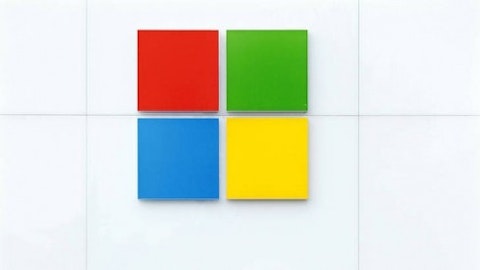
Pulling out of the dive
As the chart below shows, Advanced Micro Devices, Inc. (NYSE:AMD) has, at least for now, pulled out of the revenue nose dive that its Computing Solutions division has suffered since the beginning of 2012.

The question of sustainability was evidently on the minds of AMD investors as they mulled over Advanced Micro Devices, Inc. (NYSE:AMD)’s Q2 earnings report on 7/18 during after hours trading. AMD shares had closed up nearly 6% only to give most of it back after the markets closed.
If there was a single specific catalyst for the change in sentiment, it must have been a question by an analyst asking whether the new revenue from console APUs (Accelerated Processing Units in AMD-speak) would only just offset the loss of royalties from the previous console generation. It was as if all the air had been suddenly sucked out of the room, leaving the Advanced Micro Devices, Inc. (NYSE:AMD) execs gasping for breath.
In fact the revenue streams do not work out to be comparable, even if you assume the low end of the unit shipments for console APU’s of 5 million per quarter, which agrees with the historical average for combined console shipments by Microsoft Corporation (NASDAQ:MSFT) and Sony Corporation (ADR) (NYSE:SNE) since the introductions of their current generation consoles. The analyst had estimated that AMD made about $100-150 million in royalties per year. At 5 million console APU shipments per quarter, a $40 ASP, and assuming 35% gross margin, the gross profit per quarter works out to be about $70 million, for an annual gross profit almost double the assumed royalties.
But the question took away the celebratory air of the conference call, and left unanswered whether Advanced Micro Devices, Inc. (NYSE:AMD) could sustain profitability after Q3.
A closer look at AMD’s Q3 guidance
On the surface, Advanced Micro Devices, Inc. (NYSE:AMD)’s guidance for Q3 was refreshingly positive: a sequential increase of 22% in total revenue to $1.4 billion, a reduction of operating expenses to $450 million, and a gross margin of 36%. Turning the crank on the numbers yields an operating profit of $59 million. Not great, since it won’t even represent an improvement over AMD’s 2012 Q3 results ($1.269 billion in revenue, operating income of $131 million), but much better than the recent string of losses.
Most of the $260 million increase in revenue for Q3 will necessarily come from console APU shipments. Revenue from the graphics division will probably show negligible growth, hovering around the $320 million mark. There are signs that Advanced Micro Devices, Inc. (NYSE:AMD)’s share of the PC and server processor market has stabilized at about 15%, but growth is doubtful. As I discussed in my recent post on Intel Corporation (NASDAQ:INTC)’s Q2 earnings, in Q3 Intel will roll out fanless dual core Haswell processors, and in Q4 the Bay Trail Atoms arrive for thin and light tablets. Both processor families use Intel Corporation (NASDAQ:INTC)’s latest 22 nm process, which provides an inherent energy efficiency advantage compared to the 32-28 nm processes used by AMD’s foundry partners.
This leaves console APUs with the burden of carrying the full $260 million increase. By virtue of the revenue generated by the Computing Solutions division in Q2, it’s clear that Advanced Micro Devices, Inc. (NYSE:AMD) has already shipped a substantial number, about 5.5 million console APUs. They would need to in order to support planned build ups by Sony and Microsoft for the holiday season, which have to be started months in advance of shipments to retailers. In order to reach the target revenue of $1.1 billion for Computing Solutions, AMD will need to ship about 12 million console APUs in Q3.
That’s a lot of APUs, but combined sales of 20 million consoles in the first quarter of availability is not unthinkable, and I’m sure that Microsoft Corporation (NASDAQ:MSFT) and Sony Corporation (ADR) (NYSE:SNE) would rather have too many units available than not enough. What happens after that is anyone’s guess, which is why Advanced Micro Devices, Inc. (NYSE:AMD) execs wouldn’t speculate on Q4 revenue or console shipments. They simply don’t know.
Q4 and beyond
By Q4 APU shipments probably fall back to the 5 million/quarter range. Unless something dramatic happens in the PC side of the business, that isn’t enough to sustain profitability, since AMD’s revenue basically reverts to the roughly $1.2 billion of Q2.
When I first wrote about AMD back in April, I speculated that console APU’s might be able to save Advanced Micro Devices, Inc. (NYSE:AMD), but only with further cost cutting. Going forward, AMD will need to make further operating cost reductions to the tune of $30 million in order to break even in Q4 and beyond. Naturally, this is something that received special emphasis in AMD’s presentation, and investors should watch AMD’s cost cutting performance in Q3 to ensure that AMD is on track for further cuts in Q4. AMD predicted operating costs of $450 million for Q3.
A little expansion in the Windows PC and Tablet areas would be nice, but here the future looks very cloudy. The very mention of Intel Corporation (NASDAQ:INTC)’s Bay Trail seemed to produce yet more managerial asphyxiation among the Advanced Micro Devices, Inc. (NYSE:AMD) execs. It’s tough competing with Intel’s latest and greatest mobile chip when your foundries (either Global Foundries or TSMC) are a generation behind Intel in process technology. AMD is readying some processors for the Windows 8 ultralight and tablet markets, but going up against Bay Trail is going to be tough.
Advanced Micro Devices, Inc. (NYSE:AMD)’s main advantage is what got them the console APU wins, very capable internal graphics processors married to very capable CPUs. In neither category would the internal processors be the best on their own; it just isn’t possible (for AMD) to build best in class graphics and general purpose processing into a single piece of silicon. But in side by side tests, AMD’s best (the A10-6800K) trounces Intel Corporation (NASDAQ:INTC)’s best (the 4th gen Core i7 4770K) in graphics-intensive gaming. AMD was simply willing to build a more capable graphics processor into their machines than Intel Corporation (NASDAQ:INTC) was. But this could change.
In the meantime, Advanced Micro Devices, Inc. (NYSE:AMD) APUs for mobile may find an audience with mobile gamers, and eventually, a variant of AMD’s console APUs will become available for PCs, assuming that Microsoft Corporation (NASDAQ:MSFT) and Sony Corporation (ADR) (NYSE:SNE) haven’t locked Advanced Micro Devices, Inc. (NYSE:AMD) into too restrictive a licensing agreement. There’s every indication that the Xbox One and Playstation 3 game consoles have excited gamers worldwide with their combination of price and performance. These could provide a halo effect for AMD APU based PCs, but only if consumers can buy performance equivalent to or better than the new consoles.
The article AMD Pulls out of its Nose Dive originally appeared on Fool.com and is written by Mark Hibben.
Mark Hibben owns shares of Intel and Advanced Micro Devices, Inc. (NYSE:AMD). The Motley Fool recommends Intel Corporation (NASDAQ:INTC). The Motley Fool owns shares of Intel and Microsoft Corporation (NASDAQ:MSFT). Mark is a member of The Motley Fool Blog Network — entries represent the personal opinion of the blogger and are not formally edited.
Copyright © 1995 – 2013 The Motley Fool, LLC. All rights reserved. The Motley Fool has a disclosure policy.




